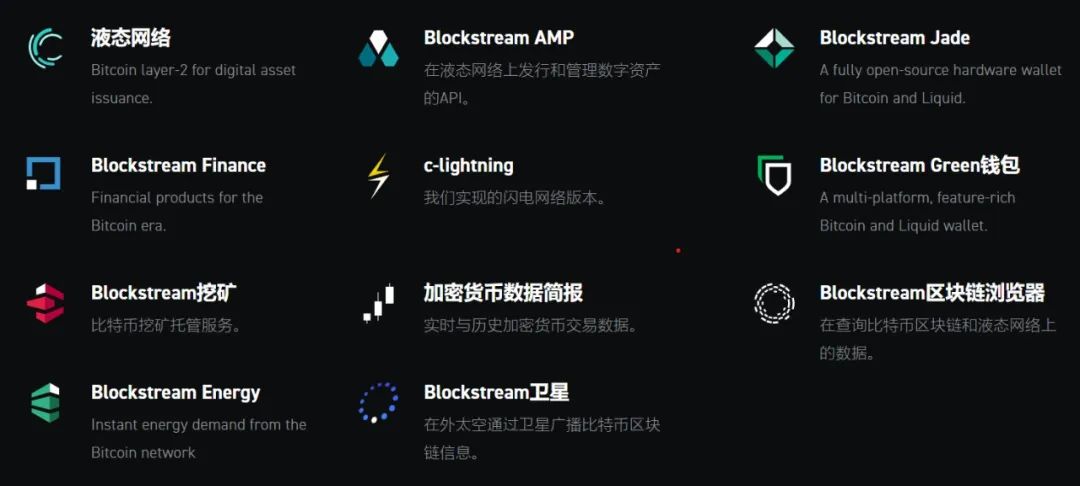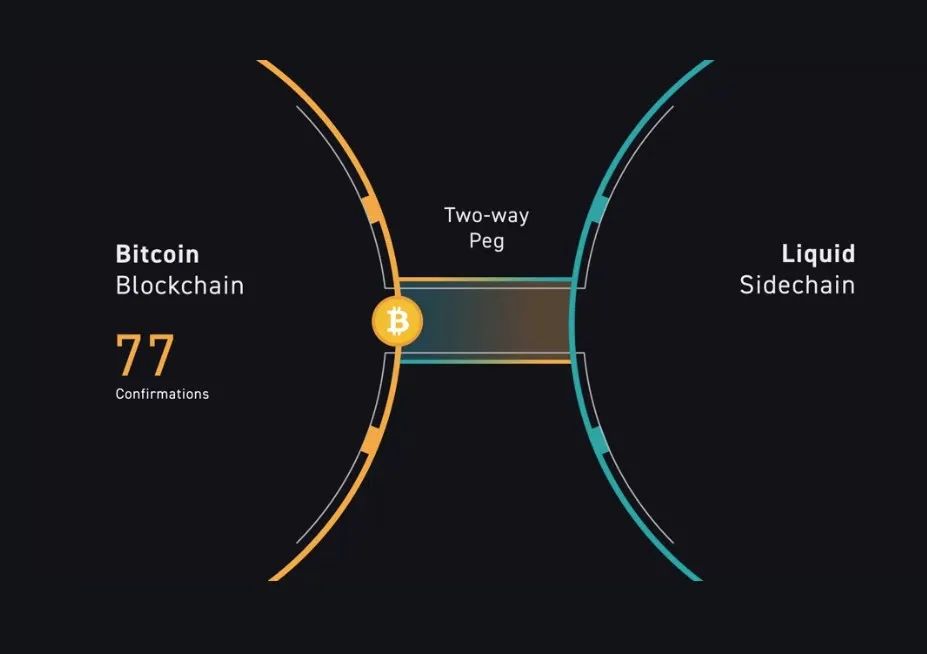In December of the just past year, the Salvadoran National Bitcoin Office (ONBTC) issued a statement announcing that the Bitcoin bond "Volcano Bond" had been approved by the Salvadoran Digital Assets Committee and is expected to be issued in the first quarter of 2024. The bond will be issued on the Bitfinex securities platform.
"The funds raised from the issuance of the bond will be used to build a city called Bitcoin City. This bond issuance will make El Salvador a new world financial center," said Samson Mow, the former Chief Strategy Officer of Blockstream, at a meeting on El Salvador's Bitcoin bond in November 2021.
So what role does Blockstream, the company behind El Salvador's Bitcoin bond, play in the world of Bitcoin?
Blockstream's Involvement in the "Bitcoin Full Industry Chain"
In August 2021, the Bitcoin and blockchain infrastructure company Blockstream completed a $210 million Series B financing and simultaneously acquired the Israeli ASIC chip design team Spondoolies. This marked Blockstream's expansion from its original software-centric business to the upstream of the Bitcoin industry chain.
Prior to this, Blockstream's commercial product line mainly focused on the Bitcoin sidechain "Liquid" ecosystem and Bitcoin mining-related services, as well as some data-related businesses, dedicated to expanding and strengthening the Bitcoin ecosystem.
The "Bitcoin Full Toolbox" Product Matrix
Blockstream's early product line mainly served institutional Liquid sidechain solutions, and later entered the consumer-level product market by acquiring the Bitcoin wallet Green Wallet.
At the same time, Blockstream also has several free product lines in the Bitcoin ecosystem that are continuously maintained and iterated, such as the Bitcoin full node satellite network Blockstream Satellite, multi-signature wallet Blockstream Green, and the Lightning Network client c-lightning, and so on.

Although Blockstream's involvement in Bitcoin Core development is at the forefront of software development, the upstream of the entire Bitcoin industry chain also involves the consensus mining industry. Therefore, in early 2020, they also announced the launch of Bitcoin mining services, collaborating with listed companies Aker, Square, and BlockFi to carry out Bitcoin mining operations.
This includes the subsequent launch of the "Blockstream Energy" service, aimed at helping energy producers sell excess electricity to miners, thereby providing scalable energy demand for power generation projects through Bitcoin mining, improving power generation efficiency, and enhancing the economics of renewable energy projects globally, especially in remote areas.
From the perspective of chip manufacturing, alongside the public announcement of the Series B financing, Blockstream also announced the acquisition of the intellectual property of the Bitcoin mining hardware manufacturer Spondoolies. The core team of Spondoolies will also join Blockstream and focus on ASIC chip design and manufacturing, filling in Blockstream's gaps in this area.
In addition, Blockstream has also launched the Blockstream Mining Note (BMN), a circulating Bitcoin mining token on Liquid for qualified investors, with mining facilities located in Georgia, USA, and Quebec, Canada.
With the improvement of the layout in the mining sector, Blockstream now covers almost all dimensions of the Bitcoin development, institutional services, and mining in its product matrix.
Bitcoin Sidechain "Liquid"
The key core of Blockstream's "Bitcoin Full Toolbox" is "Liquid".
"Liquid" is the Bitcoin sidechain mentioned earlier, on which El Salvador plans to issue Bitcoin bonds. It can be simply understood as a "smart contract layer based on Bitcoin":
As a second-layer network of Bitcoin, it allows the issuance of security tokens and other digital assets, aiming to provide financial products and services through the Bitcoin network and be used for financial asset settlement.

Currently, the Bitcoin network ecosystem can be simply divided into 4 basic layers:
The main chain, which is mainly responsible for the value system of Bitcoin, carrying the decentralization and security of Bitcoin, as well as the value orientation represented by the Bitcoin community;
The second layer, represented by the Lightning Network, focuses on expanding the payment experience of Bitcoin;
Sidechains, where the smart contract part is mainly placed, and the most important function of the sidechain is to introduce smart contract applications into the Bitcoin ecosystem;
Cross-chains, almost all mainstream public chains have introduced Bitcoin into their own ecosystems through cross-chain bridges, and in their own ecosystems (especially Ethereum), it is used to develop Bitcoin-related DeFi projects;
The "Liquid" sidechain is also the core product of Blockstream. Although other products are interconnected, Liquid network will be given priority as the most important product line. "For example, the wallet we develop will eventually be connected to the Liquid network, so the profit model of the wallet itself is secondary, and the main focus is on how to grow the Liquid network."
Blockstream: The "Old Hand" of the Bitcoin World
In 2014, as Ethereum began its presale, Mt. Gox was hacked, and the debate over Bitcoin's scalability intensified, the attention of the entire crypto world was focused on these major events that had a profound impact on the industry.
At the same time, Blockstream, which had been established for only a few months, received a $20 million Series A financing and clearly defined its project positioning at the time—expanding the functionality of the Bitcoin protocol layer (sidechains).
The company's lineup was quite luxurious, with its leader being Adam Back, the former developer of HashCash; Hammie Hill, the early developer of e-cash electronic cash and the founder of zero-knowledge systems, and both HashCash and e-cash are foundational products of Bitcoin.
In addition, Blockstream also had an all-star development team, including Gregory Maxwell, Jonathan Wilkins, Matt Corallo, and Pieter Wuille, who later became leaders among Bitcoin core developers; Jorge Timon, the project leader of Freicoin, and former NASA engineer Mark Friedenbach, and so on.
The "Opposition" in the Bitcoin Scalability Debate
In the debate over Bitcoin scalability, at that time, community leaders such as Gavin Andresen and Bitmain were in favor of scalability, while Blockstream, represented by core developer Gregory Maxwell, was opposed.
The scalability camp believed that the network congestion issue must be resolved immediately, otherwise, as the user base expands further, payment delays will become very noticeable, and transaction fees will soar to alarming levels. This is unacceptable for Bitcoin, which aims to be "electronic cash." Gavin Andresen bluntly stated, "Rising Bitcoin transaction fees will drive the poor away from Bitcoin."
The opposition, however, believed that in the long run, congestion issues can and should be resolved through second-layer networks, as scalability can only solve short-term congestion. As more and more people pour into Bitcoin, the already scaled Bitcoin will have to continue to scale, and this approach has no end in sight. Therefore, they advocated maintaining the Bitcoin network at 1MB, while launching second-layer network solutions such as Segregated Witness and the Lightning Network outside the Bitcoin network.
The contradiction between the developers and mining representatives on both sides lies in the mutual lack of trust.
Developers do not trust mining representatives, believing that mining pools and large companies operating mining pools have stolen the miners' voice, and industrialized mining has become a centralized commercial activity. The existence of "mining hegemony" is destroying the decentralization essence of cryptocurrencies.
Mining representatives believe that once the Lightning Network is truly built, the vast majority of transactions will occur on the second layer network, and the second layer network will ultimately become absolutely centralized, with central nodes monopolizing the transaction channels. The underlying network will become the channel for settlement of central nodes in the second layer network, and most people will never use the underlying network, which goes against the original intention of Satoshi Nakamoto in creating Bitcoin.
In the subsequent New York meeting where both sides aimed to negotiate, due to various conflicts, Samson Mow, representing Bitcoin Core and Blockstream, was ultimately excluded from the meeting.
The subsequent twists and turns of the disputes and conflicts over the routes need not be reiterated, as the results are already known to everyone, with the Pandora's box of Bitcoin fork coins such as BCH being opened, making everything irreversible.
Controversy between "Bitcoin Development" and "Corporate Organization"
Previously, Blockstream has publicly disclosed its financing information three times, namely a $21 million seed round in November 2014, a $55 million Series A round in February 2016, and an undisclosed strategic investment from Digital Garage (DG Lab Fund) in November 2017.
It should be clarified that Bitcoin Core is an open-source project responsible for maintaining and releasing the Bitcoin client software "Bitcoin Core" (including full node validation and Bitcoin wallets) and some related software maintenance work.
A significant portion of the core developers and contributors involved in the Bitcoin Core project are employees of Blockstream, funded by Blockstream for their development work. This has led to a dual controversy over Blockstream's "Bitcoin development" and "corporate organization":
On the one hand, Blockstream has gradually gathered a group of the best developers in the Bitcoin community, contributing to the daily development and maintenance of Bitcoin code.
On the other hand, the form of involvement of these developers and the original Bitcoin core developers in the open-source project is different—they are directly employed by Blockstream and are salaried employees of the company.
In addition, Blockstream's financing and business development itself revolve around second-layer networks and other Bitcoin products, which has led some community members to question the independence of Bitcoin core developers and their concerns have surfaced:
Representatives of the Core, represented by Blockstream, have lost the independence and impartiality of development, and there is a danger of turning the entire underlying Bitcoin network into a vassal of the second-layer network. Some have even stated, "Blockstream controls the Bitcoin code."
Daily Bickering with the Ethereum Community
"Based on Ethereum, it is impossible to build a truly decentralized financial system, which can only be achieved through Bitcoin, the Lightning Network, and Liquid," Blockstream can be seen as the most influential "KOL organization" in the Bitcoin community. Both CEO Adam Back and COO Samson Mow, among others, take pleasure in daily attacks on the Ethereum community.
Adam Back has previously referred to Ethereum as similar to a Ponzi scheme in response to others' messages, while Buterin believes that Ethereum is rising, and the tide of history will not favor (Bitcoin) maximalists.
In the subsequent debate between Samson Mow and Vitalik, there were even doubts about "mutual harm" between Ethereum and Liquid, "No one will build any secure (e.g., financial) systems on the Ethereum platform. If you want tokens, you can issue them on the Liquid network, and you can thank me later."
To some extent, behind Blockstream is the entire Bitcoin community—the debate over Bitcoin scalability, the competition between the Lightning Network and sidechain solutions, and the competition with Ethereum and other competing coins, are all intertwined and difficult to untangle.
免责声明:本文章仅代表作者个人观点,不代表本平台的立场和观点。本文章仅供信息分享,不构成对任何人的任何投资建议。用户与作者之间的任何争议,与本平台无关。如网页中刊载的文章或图片涉及侵权,请提供相关的权利证明和身份证明发送邮件到support@aicoin.com,本平台相关工作人员将会进行核查。




